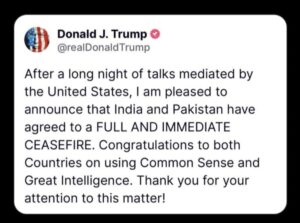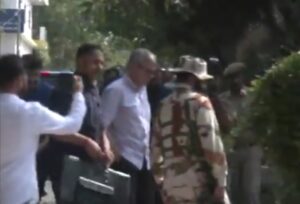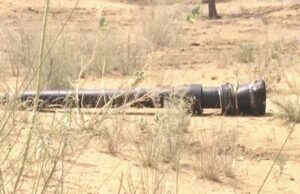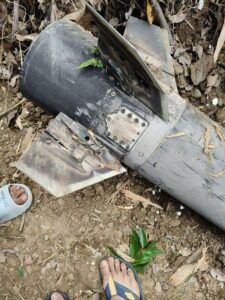Indo-Pak Ceasefire: What are the terms & conditions???
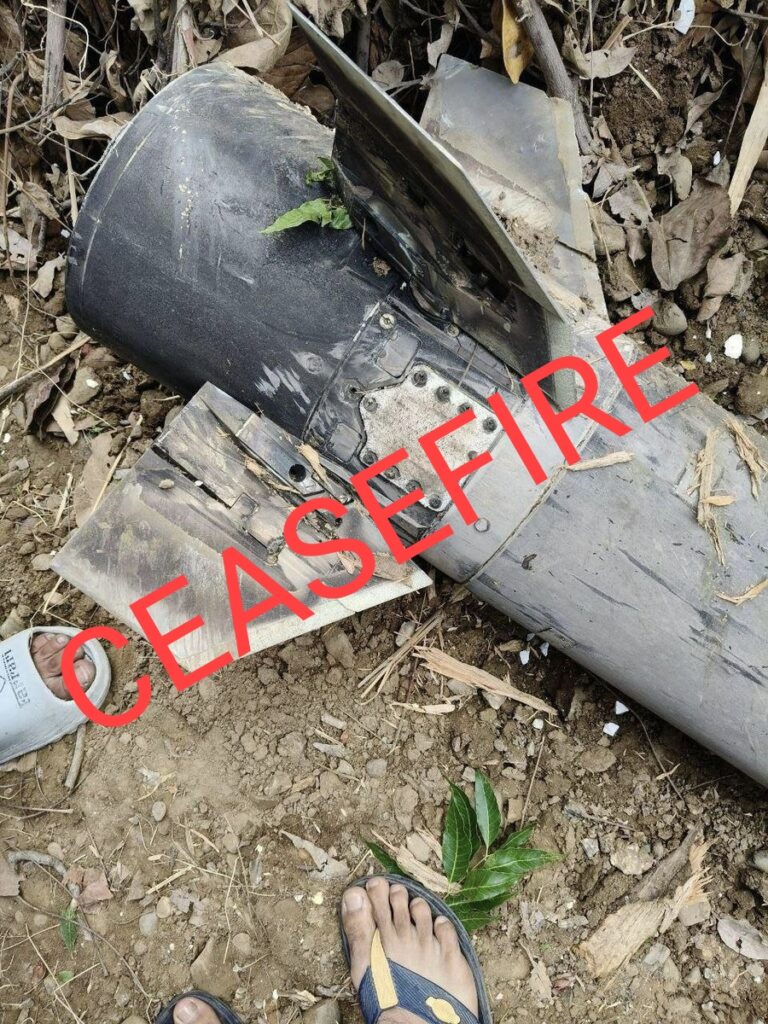
The most recent ceasefire agreement between India and Pakistan was announced on May 10, 2025, following a period of heightened tensions and military escalation triggered by a terrorist attack in Pahalgam, Indian-administered Kashmir, on April 22, 2025. Below is a summary of the ceasefire terms and conditions, based on available information, along with relevant context:
Ceasefire Terms and Conditions (May 10, 2025)
- Immediate Cessation of Hostilities:
- Both nations agreed to a “full and immediate ceasefire” effective from 5:00 PM IST (4:30 PM PKT) on May 10, 2025.
- The agreement covers all military actions on land, air, and sea, including firing, drone attacks, and missile strikes.
- Direct Military Communication:
- The ceasefire was formalized through a hotline conversation between the Directors General of Military Operations (DGMOs) of India and Pakistan. The Pakistani DGMO initiated the call at 3:35 PM IST, and both sides agreed to halt all military actions.
- The DGMOs planned to hold further discussions on May 12, 2025, to ensure compliance and address any issues.
- Conditional Commitment from India:
- India emphasized that the ceasefire’s continuity depends on Pakistan preventing future terrorist activities. Any act of terrorism against India will be considered an “act of war” and met with a proportionate response.
- This condition reflects India’s stance that Pakistan must curb cross-border terrorism, particularly in light of the Pahalgam attack, which India attributed to Pakistan-based elements (though Pakistan denied involvement).
- Pakistan’s Stance on Restraint:
- Pakistan stated it “does not seek war” and is prepared to exercise restraint, provided India reciprocates. The Pakistani Foreign Minister, Ishaq Dar, emphasized that Pakistan’s actions were retaliatory and that war is not a solution, but Pakistan reserves the right to respond if challenged.
- Pakistan reopened its airspace to all flights, including Indian airlines, following the ceasefire, signaling a de-escalatory step.
- Third-Party Mediation:
- The ceasefire was facilitated through US-mediated talks, with US President Donald Trump and Secretary of State Marco Rubio claiming credit for brokering the agreement after a “long night of talks.”
- However, Indian sources clarified that the cessation of hostilities was worked out directly between the two countries, with the Pakistani DGMO initiating discussions, suggesting that US mediation played a supportive rather than decisive role.
Context and Background
- Trigger for Escalation: The ceasefire followed a period of intense conflict sparked by the April 22, 2025, Pahalgam attack, which killed 26 civilians. India accused Pakistan of supporting the attackers, leading to India’s suspension of the Indus Waters Treaty and the 1972 Simla Agreement, closure of the Wagah border, and military strikes. Pakistan retaliated by closing its airspace, suspending bilateral agreements, and warning of war if India diverted Indus waters.
- Previous Ceasefire (2003, Reaffirmed 2021): The 2003 ceasefire agreement, reaffirmed on February 25, 2021, had significantly reduced violence along the Line of Control (LoC) until the 2025 escalation. It required strict observance of all agreements and cessation of firing along the LoC and other sectors. However, this framework was strained by the Pahalgam attack and subsequent violations.
- Simla Agreement Suspension: Pakistan’s suspension of the 1972 Simla Agreement on April 24, 2025, raised concerns about the LoC’s stability, as the agreement mandated bilateral dispute resolution and respect for the LoC. Pakistan’s move was seen as an attempt to internationalize the Kashmir issue, potentially involving third parties like the UN or China.
- Impact on Civilians: The 2021 ceasefire had brought relief to border residents, reducing casualties and enabling development projects. The 2025 escalation disrupted this peace, with cross-border firing affecting villages and prompting fears of renewed violence. The May 10 ceasefire aims to restore calm for civilians on both sides.
Challenges and Fragility
- Terrorism Concerns: India’s insistence on Pakistan curbing terrorism as a condition for the ceasefire’s continuation remains a sticking point, given historical accusations of Pakistan’s support for militant groups like Jaish-e-Mohammad and Lashkar-e-Taiba.
- Trust Deficit: Both nations have accused each other of violating ceasefires and sponsoring attacks, complicating long-term peace. Pakistan’s demand for a neutral investigation into the Pahalgam attack and India’s rejection of such proposals highlight ongoing mistrust.
- Geopolitical Factors: The involvement of external powers (e.g., US mediation) and Pakistan’s potential outreach to China or the OIC could shift the bilateral framework established by the Simla Agreement, risking further escalation if the ceasefire falters.
Conclusion
The May 10, 2025, ceasefire between India and Pakistan is a critical de-escalatory step, halting military actions across all domains and reopening communication channels between the DGMOs. India’s condition that Pakistan prevent terrorism underscores the ceasefire’s fragility, while Pakistan’s emphasis on restraint and reciprocity suggests a mutual interest in avoiding war. However, the suspension of key agreements like the Simla Agreement and the Indus Waters Treaty, combined with deep-seated mistrust, poses challenges to sustaining peace. Continued dialogue, as planned for May 12, and adherence to the ceasefire terms will be crucial for stability along the LoC and beyond.
If you need further details or specific aspects of historical ceasefire agreements (e.g., Karachi Agreement 1949, Simla Agreement 1972), please let me know!

